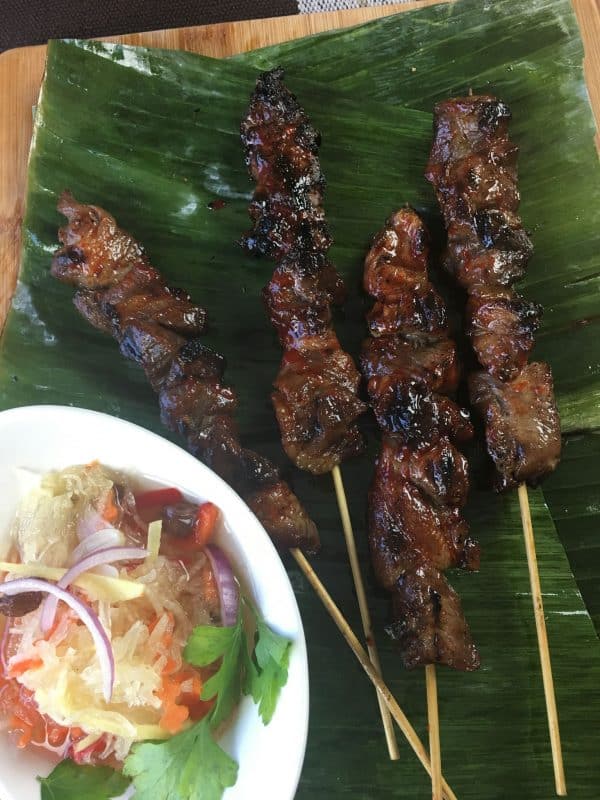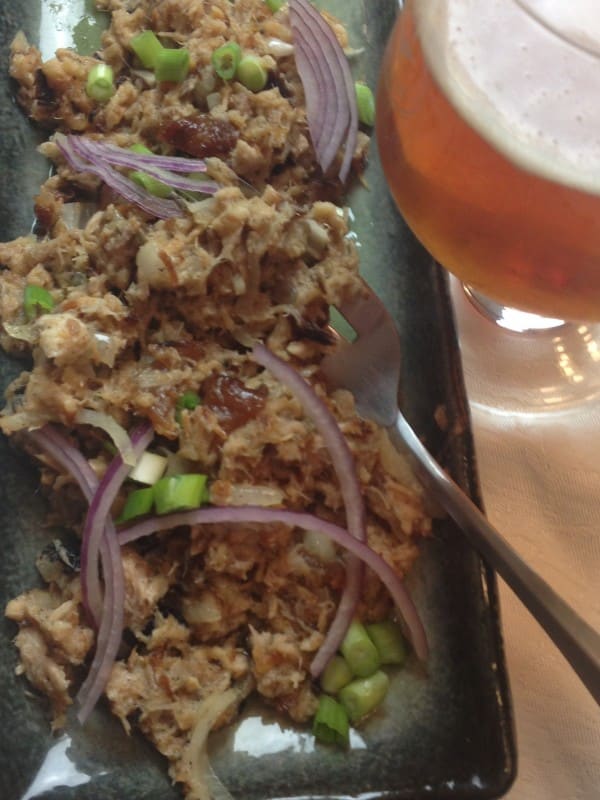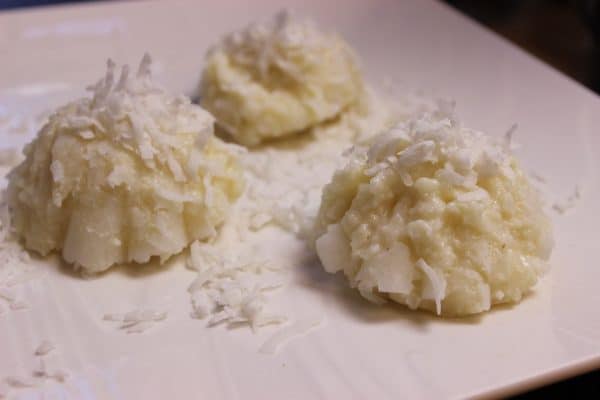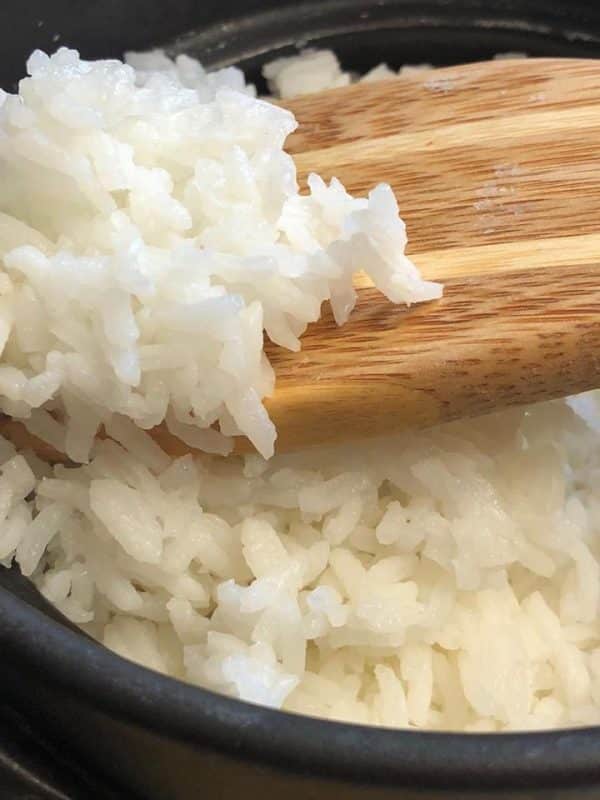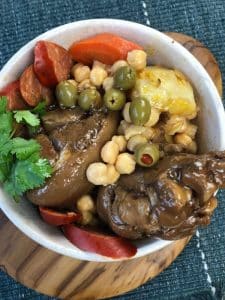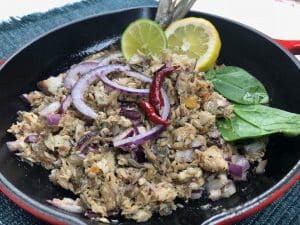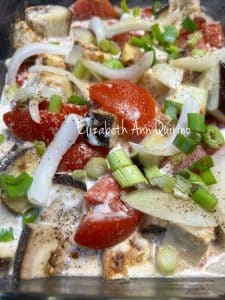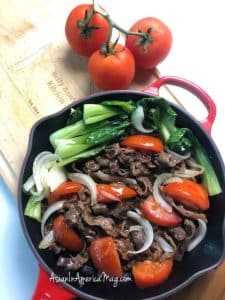How Filipinos in America Give Thanks
As an Amazon Associate and member of other affiliate programs, I earn from qualifying purchases.
What is a typical American Thanksgiving like in a Filipino home here in the States? Food is a journey from the appetizers to the end of the meal, and desserts are as scrumptious as the entrees. The chilly air fills the outdoors. Autumn leaves in monochromatic hues are strewn on the ground. The tree branches are stark and bare. But inside the house, music, laughter and chatter is loud and lively.
The sweet scent of a huge steaming cauldron of white jasmine rice welcomes guests as soon as the door is opened. Rice always accompanies the plethora of dishes – both Filipino and American food mingling in a magnificent feast for all to share. The roast turkey is never lonely, there are platters of Filipino food served right next to it. And after saying grace, we dig in.
We start with an appetizer that explodes, like a sizzling, spicy platter of Pork Sisig. Classic, old-fashioned Filipino Sisig, was made from lechon (roast pork) cheeks. The recipe involves char- grilling the pig’s head, slicing off the cheeks, marinating it and braising the chopped up bits into a crisp, tantalizing hash. The traditional pork sisig I grew up with in the Philippines was a pulutan (appetizer) enjoyed with rounds of beer. And never ever was there an egg on it as current versions here in America serve it today.
Outdoors, is a cousin braving the subzero temperatures grilling the all-time party favorite: Pork Barbecue on skewers. What makes these Filipino Pork Barbecue special? The sight is irresistible – glazed pork pieces on a bamboo skewer, the edges of the cubed morsels slightly charred and totally inviting you to take a bite. The aroma is hard to ignore – it is a robust mix of sweetness, saltiness and hints of spicy notes. And the layers of flavors are unrivalled – you bite into a heady mix of sweet-savory that’s at the same time succulent and tender.
While the American turkey is roasting in the oven, there is a flurry of Filipino aunts, mothers and grandmas in the kitchen. Whoever said ‘too many cooks spoil the broth’ has never been to a Pinoy party. There are always many, many cooks in the kitchen – chopping, peeling, stirring, cooking, and even gossiping. The wise, sage advice from generations past is what defines our dishes, passed on in the family.
“You put too much salt,” said Auntie.
“Did you soak the sotanghon first?” asked the cousin.
“Do you even know how to cook lumpia?” asked Lola (Grandma).
While pots and pans are simmering on the stovetop, a rowdy group of cousins and uncles are competing with each other at Karaoke. Filipinos are not always excited about American football. We whip out the Karaoke microphone, turn up the volume and compete with each other over singing. The automatic score the screen displays can either give you bragging rights or make you the butt of jokes. There is nothing as exhilarating as breathing out and belting “My Way” to a crescendo, with all your might, perhaps better than Sinatra or Buble. And yes, karaoke-singing is what the big-screen television is for.
We celebrate with food and our own delicacies. There’s an unending dessert table filled with both Filipino and American sweets. In the past, we joined our extended families, traveling far to be together.
If we visit our Filipino relatives I ask the hosts what they’d like me to bring. Often, I make desserts. They can either be American pies or Filipino sweet treats like a decadent Leche Flan, in the familiar oval llanera. It is at this time during the holidays when ‘kakanins’ (rice cakes with coconuts) are cooked and enjoyed in the Philippines. One of the kakanins I remember from my childhood was ‘nilupak’, a delicacy made with cassava, coconut, and sugar.
Nilupak (say “knee-looh-pak”) comes from the word ‘lupak’, a Pilipino term which means ‘to pound’. Traditionally, this snack or dessert is made by pounding boiled cassava to a pulp, using a large mortar and pestle. In the Philippines, cassava, a tuber, was harvested as a crop or purchased from the local markets, boiled, peeled then pounded. It was then mixed with creamy fresh coconut milk, grated fresh coconut meat, sugar to sweeten and shaped into rounded molds or simply placed in a bilao (large, round woven basket) lined with banana leaves. There are different variations of nilupak, depending on the province or region. Some varieties mix in boiled saging saba (plantains).
Making nilupak in my suburban American kitchen was like going back in time for me. I remembered the simplicity of the basic ingredients and the procedure of pounding, a task meant to be shared by everyone in the household was a tradition. Serving the nilupak later to visiting family or friends was a symbol of abundance shared.
Then there is the day after. Nearly everyone boils the turkey carcass the day after Thanksgiving. Our Filipino grandmothers taught us never to throw away anything, much less let leftovers go to waste. I transform what’s left of the turkey into a rich Arroz Caldo or the Filipino Rice Porridge with Turkey. To those unfamiliar with Arroz Caldo, you’re in for a treat. The clear, savory broth hits the spot with the fragrance of ginger, the hearty turkey chunks, the rich, soft rice grains, the fried garlic bits and crisp scallions. And at the end a sprinkling of citrusy calamansi (or lemon) added. Nothing else in the world is as soothing as a rich bowl of turkey porridge It’s like a warm hug to lift your spirits any day.
Gratitude has always been part of any Filipino meal. We relish Thanksgiving. But often, it is innate in our lives and our souls, to be grateful for the blessing of a delicious meal.
Thanksgiving is an American holiday, but the occasion gives our family a time to pause and reflect. No matter how tumultuous the world seems to be, we take the good with the bad, the happy with the sad and live our lives with gratitude. For Filipinos living in America, we embrace the holiday. It is a time to take stock of our blessings, big and small, every day. And always, a grand meal, lovingly prepared, is a great way to bring our families and friends together at the table in gratitude for what we have.
*Did you like this story? This essay previously published on Medium.com. Read more of my stories on Medium. Click here.
Copyright Notice: Hello, Friends! Please DO NOT LIFT OR PLAGIARIZE my original recipe, stories, photos or videos. All the images and content on this blog are COPYRIGHT PROTECTED and owned by my media company Besa-Quirino LLC. This means BY LAW you are NOT allowed to copy, scrape, lift, frame, plagiarize or use my photos, essays, stories and recipe content on your websites, books, films, television shows, videos, without my permission. If you wish to republish this recipe or content on media outlets mentioned above, please ASK MY PERMISSION, or re-write it in your own words and link back to my blog AsianInAmericaMag.com to give proper attribution. It is the legal thing to do. Thank you. Email me at [email protected]

